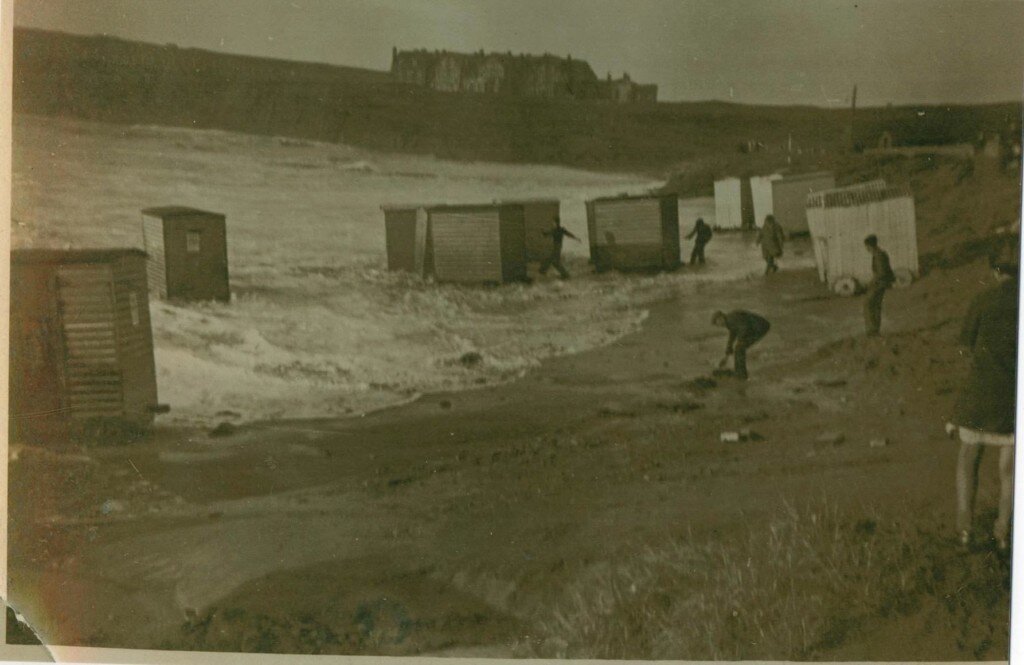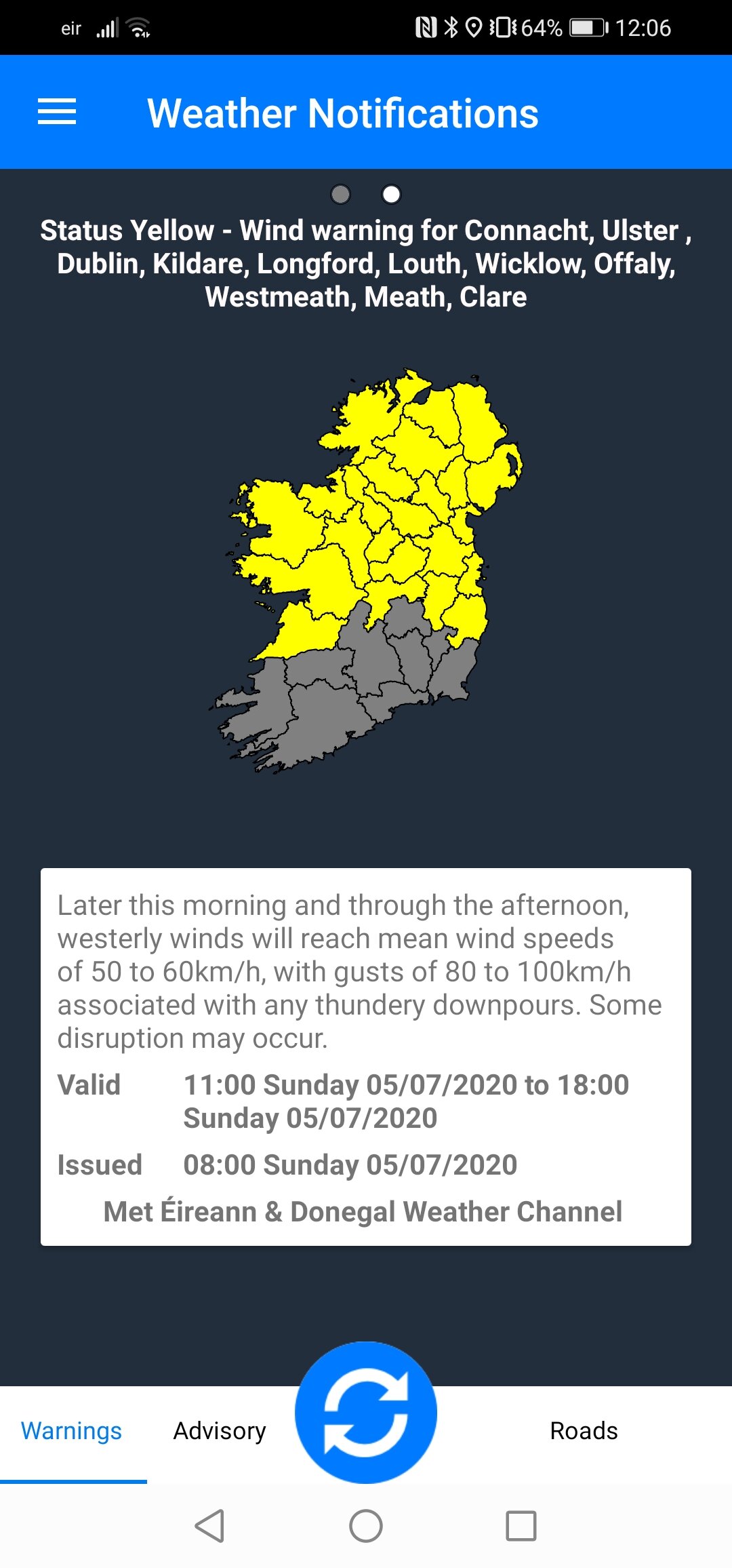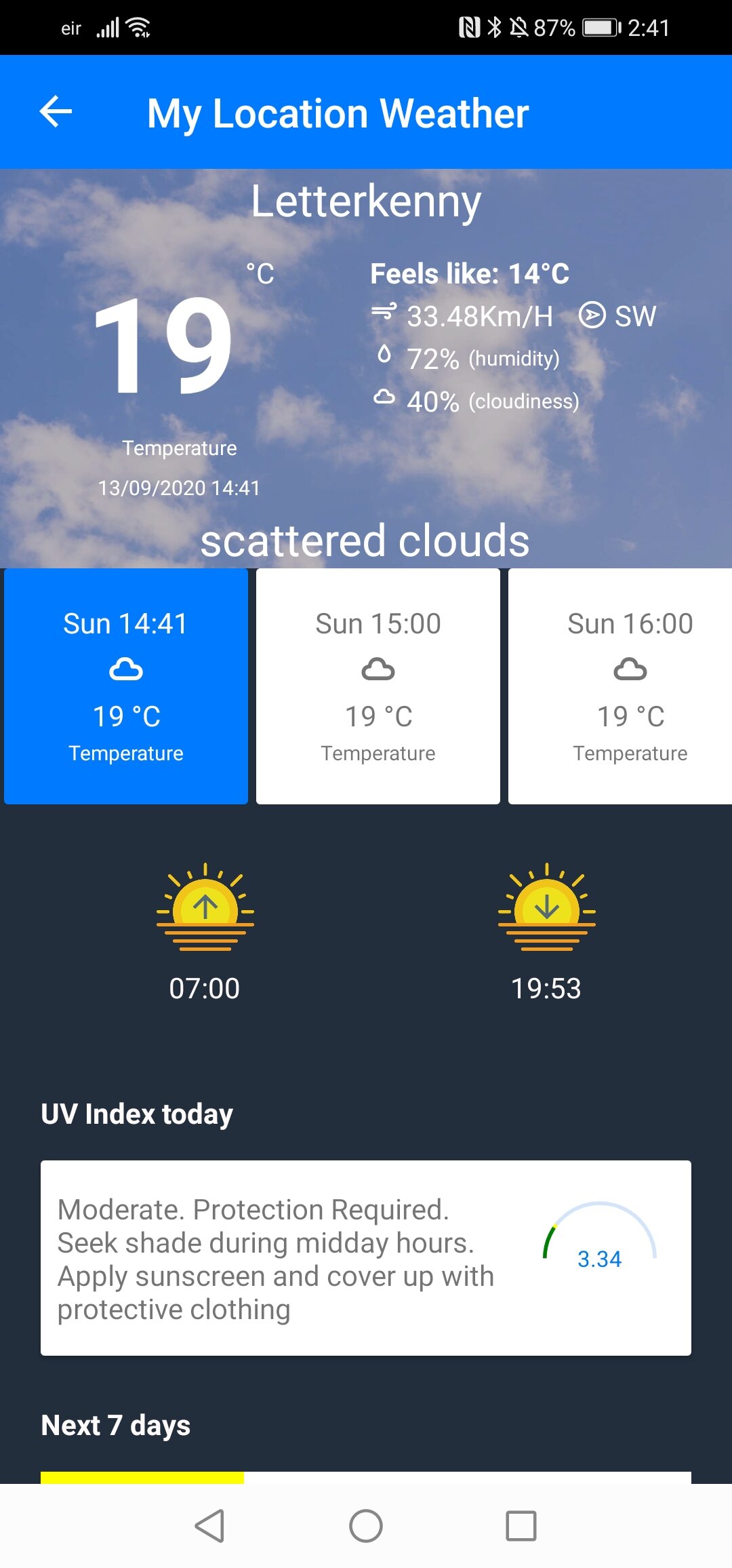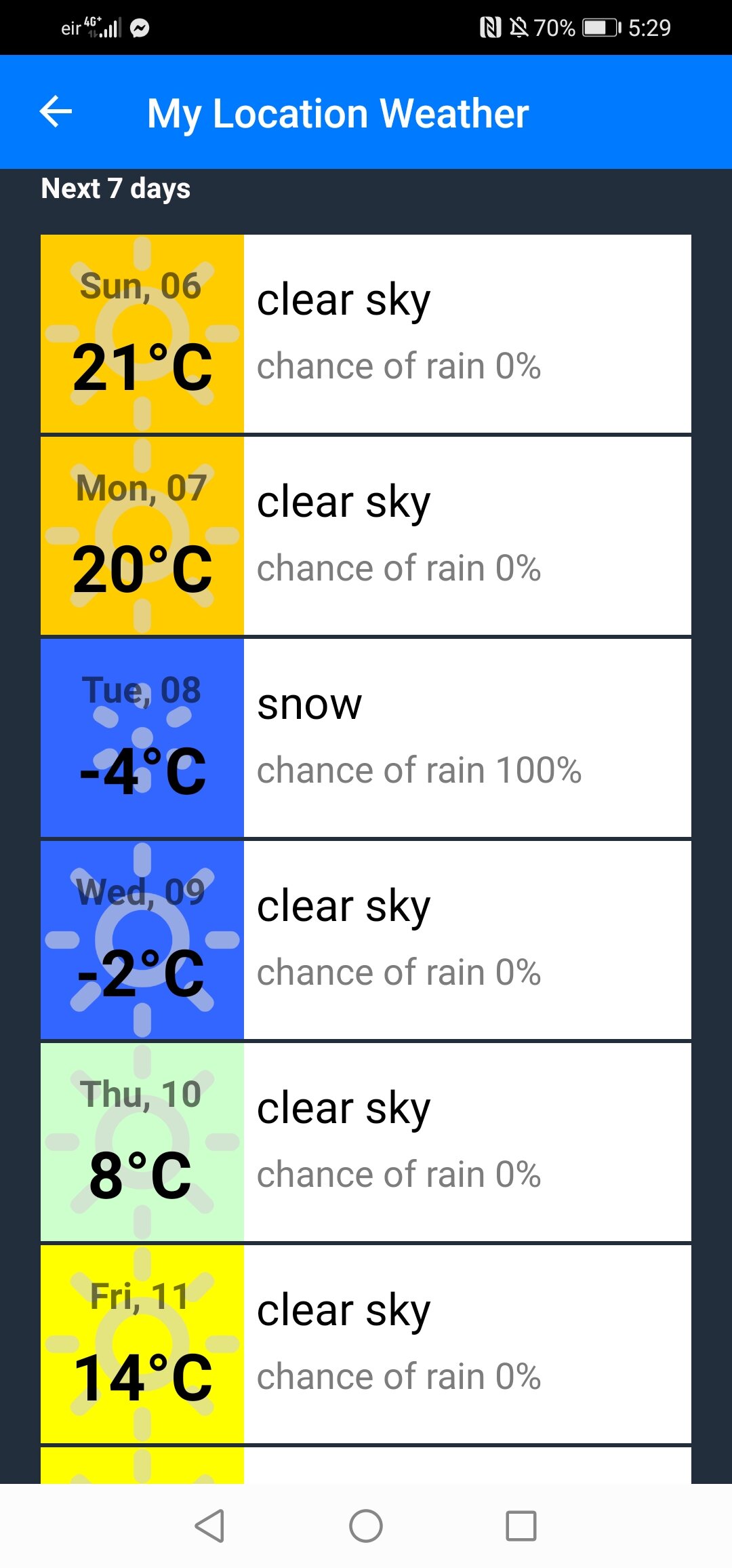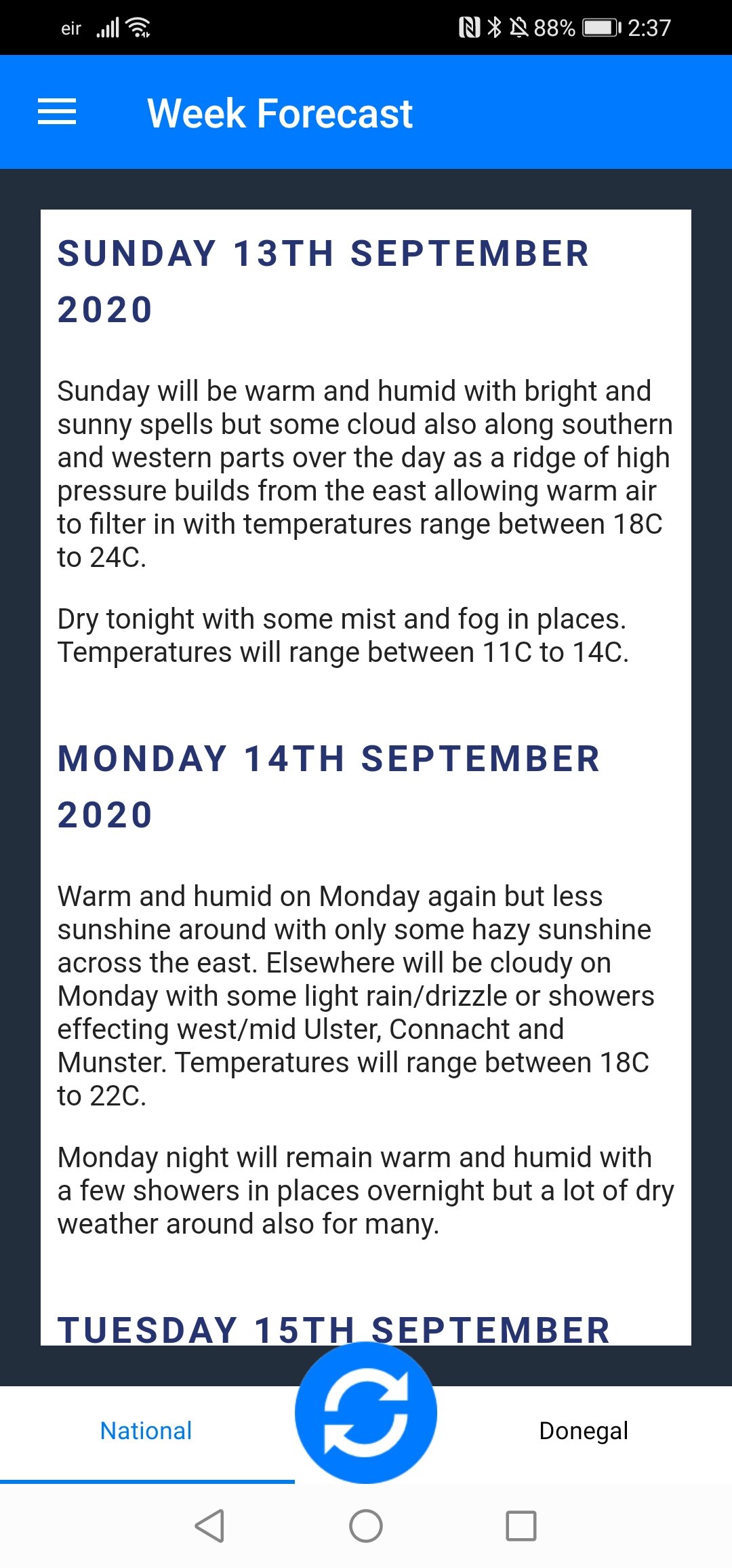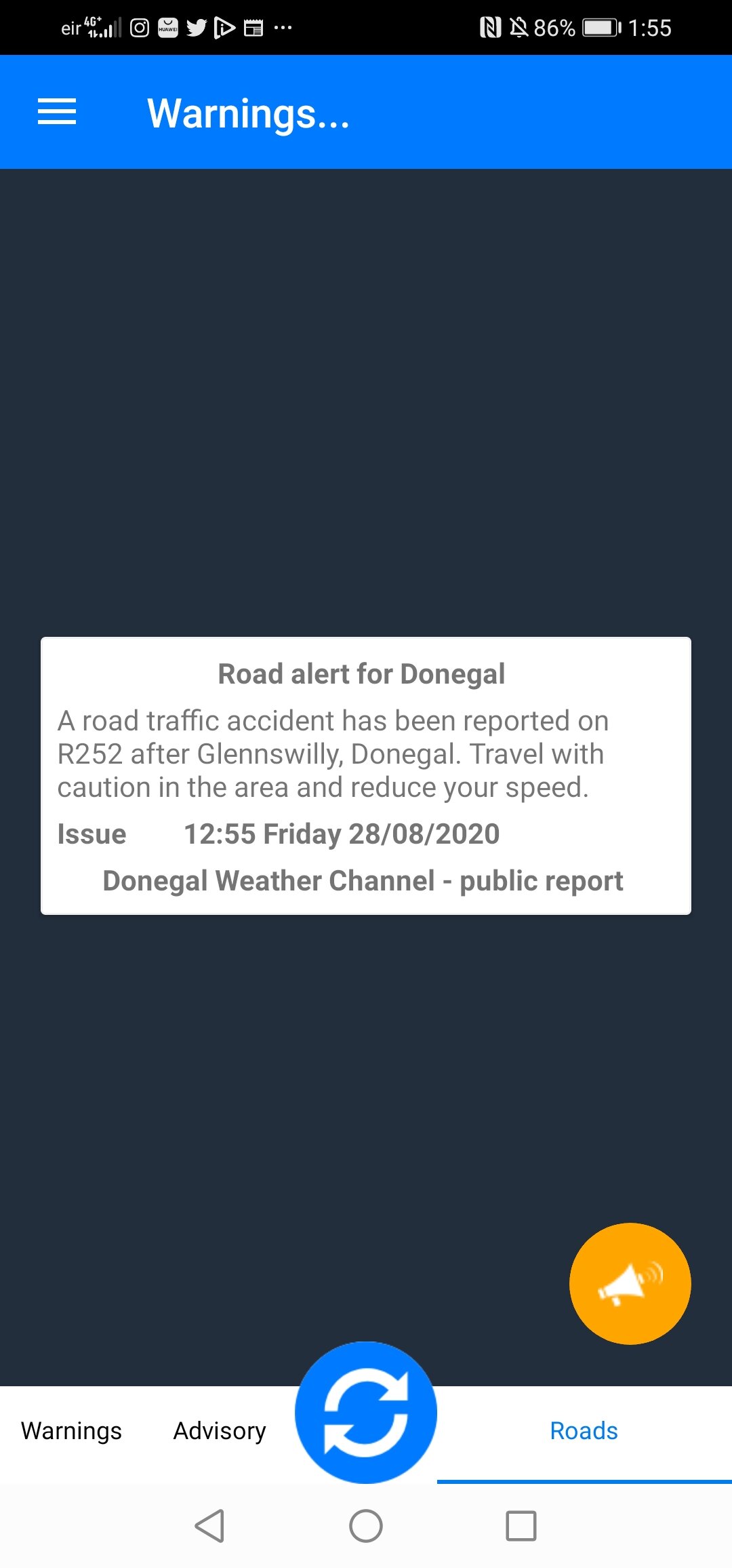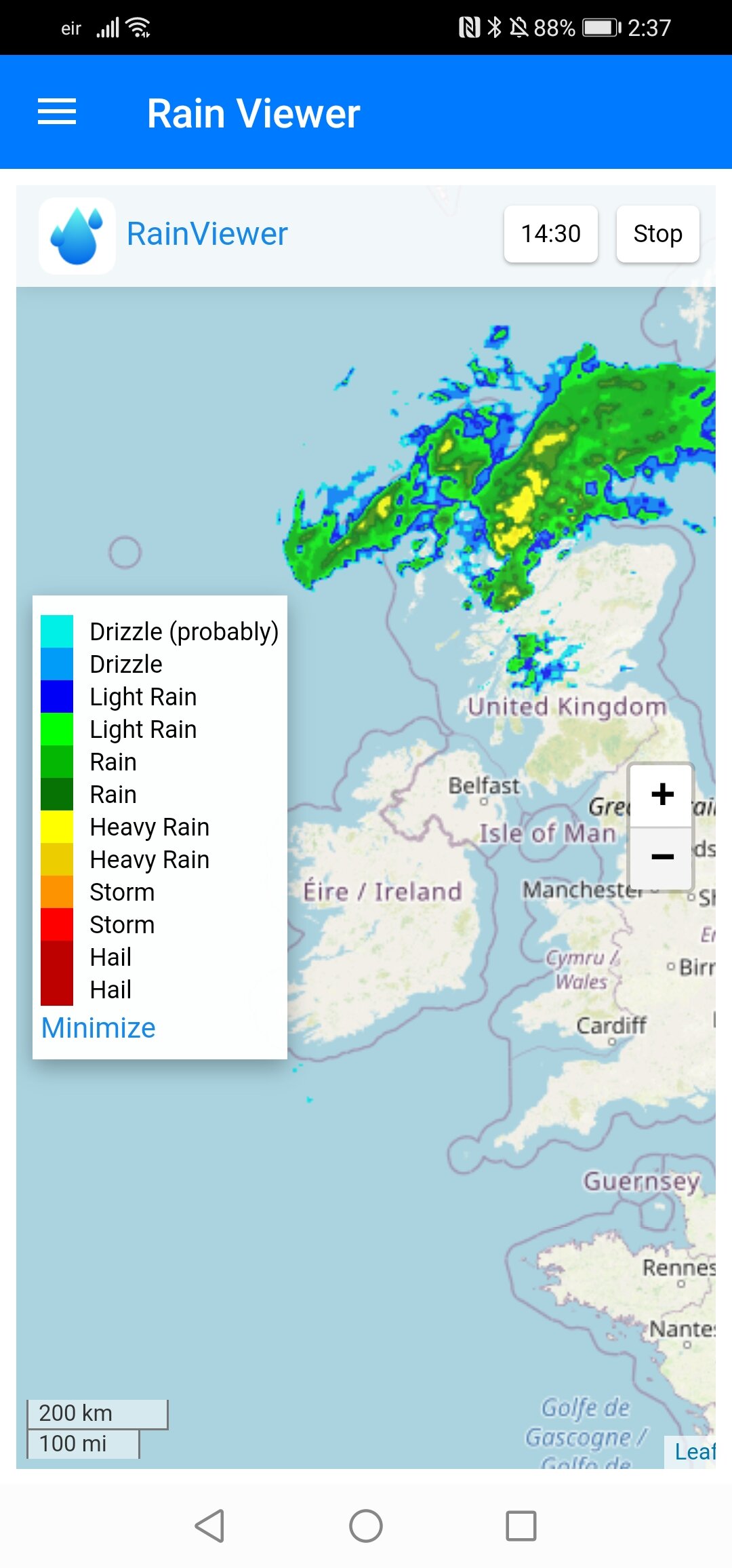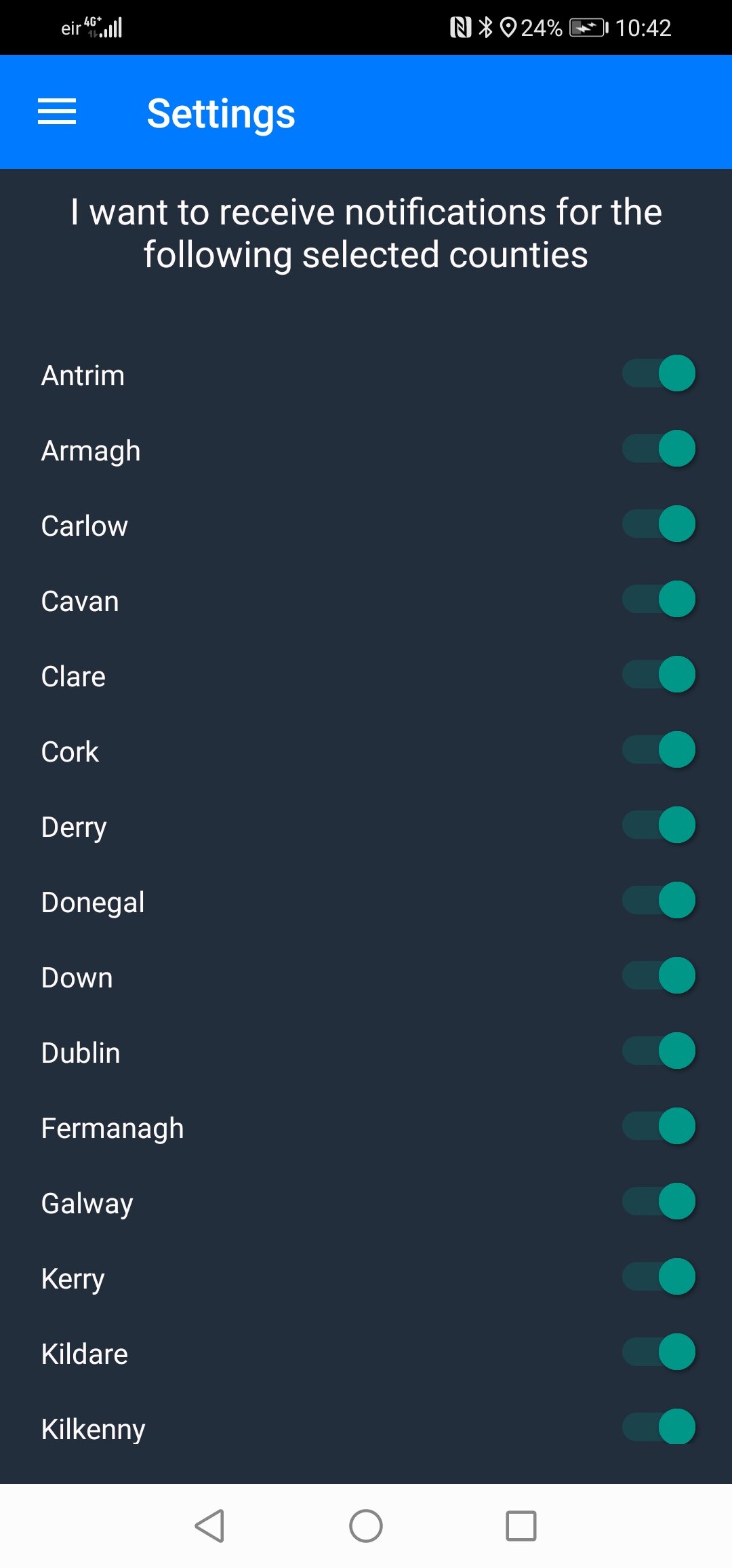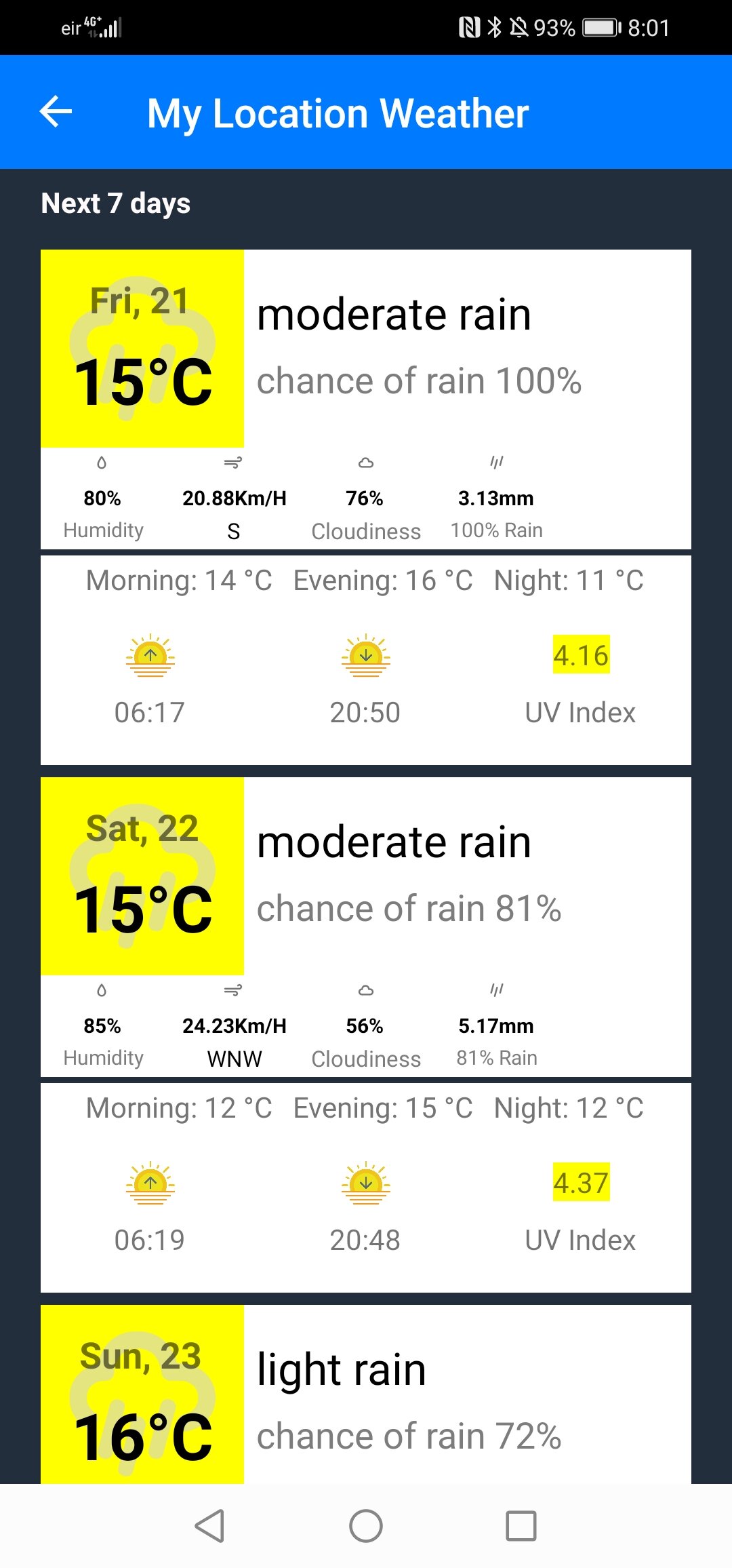Hurricane Debbie hit Ireland 59 years ago today killing 17 people on the island
Hurricane Debbie was a moderate tropical cyclone which had significant impacts in Ireland as an extratropical cyclone. The fourth named storm of the 1961 Atlantic hurricane season, Debbie originated from a well-defined tropical disturbance that was first identified in late August over Central Africa. Tracking generally westward, the system moved off the coast of Senegal on September 5 into the Atlantic Ocean. By this time, it was estimated to have become a tropical depression, but forecasters did not issue advisories on the system until two days later. Late on September 6, Debbie passed through the southern Cape Verde Islands as a moderate tropical storm, resulting in a plane crash that killed 60 people in the islands. Once clear of the islands, data on the storm became sparse, and the status of Debbie was uncertain over the following several days as it tracked west-northwestward and later northward. It was not until a commercial airliner intercepted the storm on September 10 that its location became certain. The following day, Debbie intensified and reached its peak intensity as a Category 1 hurricane on the Saffir–Simpson hurricane scale, with maximum winds of 90 mph (150 km/h).
Maintaining its peak intensity for almost a day, the hurricane gradually slowed its forward motion and weakened. By September 13, Debbie's motion became influenced by the Westerlies, causing the system to accelerate east-northeastward. The system passed over the western Azores as an extratropical cyclone bearing hurricane-force winds on September 15. The system subsequently deepened as it neared Ireland, skirting the coast of Western Ireland on September 16. The remnants of the storm later weakened and turned eastward, striking Norway and the Soviet Union, before dissipating on September 19.
Striking Ireland as a powerful storm, the remnants of Debbie brought record winds to much of the island, with a peak gust of 114 mph (183 km/h) measured just offshore. These winds caused widespread damage and disruption, downing tens of thousands of trees and power lines. Countless structures sustained varying degrees of damage, with many smaller buildings destroyed. Agriculture experienced extensive losses to barley, corn and wheat crops. Throughout Ireland, Debbie killed 18 people (12 in the Republic of Ireland and six in Northern Ireland). It caused US$40–50 million in damage in the Republic and at least £1.5 million (US$4 million) in Northern Ireland. The storm also battered parts of Great Britain with winds in excess of 100 mph (160 km/h).
DEADLY IMPACT ON IRELAND
As early as September 13, residents were made aware that a storm might strike parts of Ireland with hurricane-force winds. Two days later, forecasters believed the storm would take a more southerly course towards France. This forecast was later withdrawn as the storm failed to turn eastward. Consequently, gale warnings were issued for much of western Ireland on the morning of September 16, hours before the brunt of the storm arrived. Fearing building collapses, officials in County Galway closed markets for the duration of the storm.
A powerful extratropical cyclone, on September 16 post-Debbie became one of the most intense storms on record to strike Ireland. The storm brought hurricane-force winds to a large part of the country, with wind gusts peaking at 114 mph (183 km/h) off the coast of Arranmore. At several locations, all-time wind gusts and ten-minute sustained wind records were broken. Sustained winds at Malin Head stayed at or above 62 mph (100 km/h) for approximately six hours. Post-Debbie was the strongest storm, in terms of atmospheric pressure, to strike Belmullet during the month of September, with a pressure of 961.4 mbar (hPa; 28.39 inHg) measured in Belmullet. Rainfall from the storm was relatively minor, with rainfall rates peaking at 0.35 in (9 mm) per hour at the Valentia Observatory. Though limited, the rain did cause some lakes in the west to flood.
The greatest damage occurred in a swath stretching from Kerry to Limerick as well as the counties of Sligo and Donegal. In these areas, the storm's powerful winds damaged or destroyed many buildings and downed trees and power lines. In the hardest hit areas, communication was not restored for over four days. Many roads were blocked by debris for up to two days. Crops and trees were badly damaged. Approximately two percent of the trees in the forestry industry were snapped or uprooted, with some areas losing up to twenty-four percent. In general, corn and wheat crops fared better than expected, with only 25–30 percent being lost; however, some farmers reported barley losses greater than 50 percent. Downed trees from the storm wreaked havoc, leaving considerable damage and loss of life behind. All told, Hurricane Debbie was responsible for 12 deaths in the Republic of Ireland. Four people were killed in County Cavan – a widow, her two daughters and granddaughter – after a tree fell on their car. Five deaths resulted from fallen trees and three others were from building collapses. At least 50 people were injured, few of which were serious. A study in 2012 estimated that damage from the storm was at least US$40–50 million across Ireland.
Newspapers reported that the city of Galway "resembled a bombed area," referring to the scale of damage caused by the winds. In nearby Ballygar, two barns were destroyed, one of which had debris strewn over a wide area.Hurricane-force winds battered Tuam for several hours, leaving most buildings damaged. Nearly every structure in Connemara was damaged and many homes lost their roofs. At Cork Airport, windows at the control tower were blown out and a construction crane was knocked over. Residents in Loughrea dubbed Saturday, September 16, 1961, as "The Day Of The Big Wind" in light of the extensive damage. Damage in Roscommon was "impossible to calculate," as all power and communication around the town was lost. In Limerick, 15 people were injured. Across County Cavan, thousands of trees were snapped or uprooted, leaving many towns temporarily cut off as roads were blocked and communications lost. Many structures sustained damage, which ranged from broken slate roofing to flattened barns. Most towns across the county were left without power and telephone service. Residents described the storm as "the worst in living memory."
Along the coast, rough seas spurred by the winds damaged docks and flooded some coastal regions. Offshore, waves reached heights of 45 ft (14 m) near Arranmore. Dozens of ships were torn from their moorings and run aground at various ports, some of which were found 200 yd (180 m) inland. In Salthill, three marinas were damaged with forty vessels damaged or sunk. Between 11:00 a.m. and 1:00 p.m. local time, onshore winds from the storm caused the River Shannon to flow backwards and rise 4 ft (1.2 m).Hundreds of acres of land, including potato and cabbage plots, were left several feet underwater. Many roads were submerged, making travel impossible in the area. The combination of strong winds and sea spray from the storm caused extensive defoliation of vegetation up to 10 mi (16 km) inland. Spray from the River Foyle reportedly travelled 100 yd (91 m).
In the wake of the storm, more than 1,000 Electricity Supply Board (ESB) personnel were deployed to restore power. In some areas, locals worked together to provide others with fresh food after electricity was lost. Fire brigades were sent on patrol to quell any looting. In Galway, ESB repair crews worked through labor and supply shortages to restore power and telephone service despite recent strikes in the company. By September 23, officials in the city appealed to the Government for funding to deal with the aftermath of the storm. Uncertainty over whether some of the cost could be footed by landowners themselves resulted in disagreement over how much aid to request. Due to the severity of damage to the electrical grid, there were numerous requests made to the ESB to build underground power cables, especially in Galway
DEADLY IMPACT ON NORTHERN IRELAND
Exceptionally strong winds from the storm buffeted parts of Northern Ireland, with gusts of 106 mph (171 km/h) and 104 mph (167 km/h) measured in Ballykelly and Tiree respectively. The winds downed tens of thousands of trees and more than 1,000 telephone lines across the region.In the Baronscourt Forest in County Tyrone, 30,000 trees were blown down. Countless roads across Northern Ireland were blocked by debris and major rail lines had to suspend service. There was severe damage in the city of Derry where a newly built school was destroyed. Losses in the city alone amounted to £500,000 (US$1.4 million). In Lagan Valley, a brick community hall was destroyed. An estimated 200 homes and two churches in Strabane were damaged. The town's labour exchange building was severely damaged as well. In a local cemetery, many tombstones were uprooted from concrete foundations and destroyed. A newly built fire station in Clogher collapsed after its roof was blown off. Several people were injured in Belfast after a glass ceiling collapsed in a bus station and a piece of corrugated roofing blew in from a nearby building.
Six people were killed in Northern Ireland, mostly due to fallen trees: two in County Fermanagh and one each in Cookstown, Dungannon, Omagh, and elsewhere in Tyrone. The cereal crop in Northern Ireland suffered greatly due to Debbie, with half of the yield being lost. Losses from the crop were estimated at £1 million (US$2.8 million). In the wake of the storm, military ambulances from the Royal Army Medical Corps were dispatched to parts of West Tyrone. Power repair crews were dispatched for nearly a week repairing downed wires across Northern Ireland. Many public authorities paid tribute to the workers for their tireless work. After passing through Ireland, the storm brought strong winds and heavy rain to parts of Scotland and Wales, resulting in some damage and flooding in the region.On the coast of Lancashire and the Isle of Man, sand storms were reported, with significant sand deposits found inland.
IMPACT ON DONEGAL
On September 16th 1961 Hurricane Debi devastated much of the west coast of Ireland, including Bundoran as is evident from the picture below. The strongest winds were recorded at Ireland’s most northerly point Malin Head.
Hurricane Debbie, Bundoran, Donegal, Ireland
Aside from the loss of 60 lives in a plane crash on the Cape Verde Islands Hurricane Debbie is directly responsible for the deaths of at least 17 people in Ireland. A systematic search of local and regional newspapers across Ireland was used to generate this figure which is higher than any previous published number. In the worst incident four members of the one family including a one week old being taken home from hospital were killed in Co. Cavan when a tree fell on their car . Tree falls or driving into fallen trees were responsible for another eight deaths in eight separate incidents, three of which occurred in Co. Tyrone, Northern Ireland with one each in Cos. Donegal, Dublin, Longford, Meath and Offaly all in the Rep. of Ireland. Three fatalities occurred as a result of collapsing walls and roofs, one each in Co. Fermanagh in Northern Ireland and Dublin city and Co. Meath in the Rep. of Ireland. In addition a five year old lost his life when he was blown into a stream in Co. Fermanagh, Northern Ireland and another person drowned as a small boat capsized in Co. Derry. A large number of people suffered injuries of which at least seven of these were considered serious. The main causes of these injuries were to do with fallen trees, roofs and walls and flying debris such as roof slates.
* Only ANDROID users at moment.
* Features under development.





